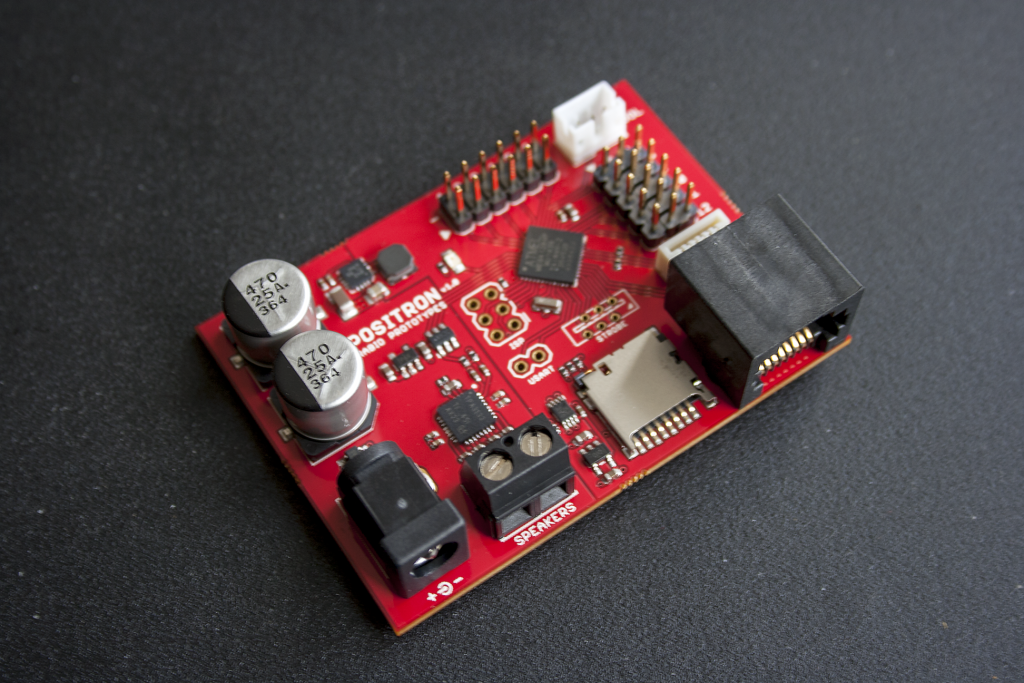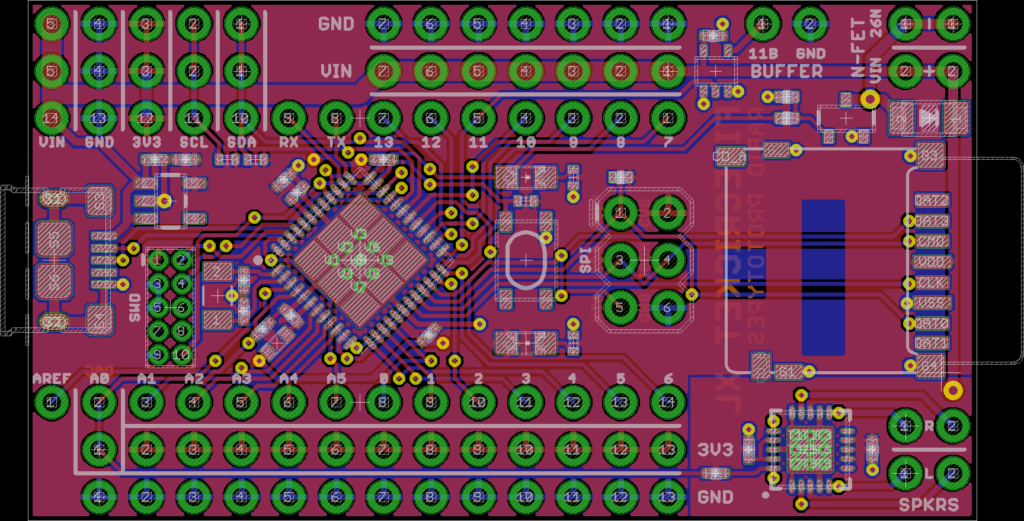Hey guys,
Sorry I haven’t posted an update in a while. I’ve been busy!
Throughout October and November I was assembling and shipping Positron kits, and at the end of November I launched the Neutrino 3.0 on Kickstarter!
https://www.kickstarter.com/projects/rabidprototypes/neutrino-30-the-32-bit-arduino-zero-compatible
With that funded, I finished up the design and ordered the prototypes, and after receiving them and verifying they worked, I placed the full order. That was at the end of January, and I expect to have the Neutrino back in stock around the end of February!
As for the Positrons, I still need a few more pre-orders to do the next run, and some of the parts I need are out of stock at the moment anyway, so I’ve decided to push back the date which I will order the kits to the end of March. That means you have until March 31st to get your order in!
Finally, I’d like to announce that in March, I’ll be launching a Kickstarter campaign for my latest board, the Firecricket XL!
The Firecricket XL is based on the Neutrino 3.0 and in addition to having way more I/O pins than the original it also features a stereo amp (TPA2012D2) for twice the output power and a buffer for 3.3V->5V level translation so you can drive strings of Neopixels!
I’ve connected the buffer to pin 11 because Adafruit’s Neopixel library can drive that pin with DMA. This means the SPI peripheral can transmit data to the Neopixels unattended and it won’t interrupt anything else you’re doing! Neopixels are notorious for being difficult to use because they don’t have a clock pin and thus have strict timing requirements that must be adhered to for them to be able to correctly interpret the data you’re sending them. But with DMA you don’t have to worry about servo interrupts or reading from the MicroSD card getting in the way of that. Of course, you can still use any Neopixel library you like and bit-bang the pin normally if you wish, but it’s always good to have options!
And speaking of options, in addition to the Firecricket XL, in my next campaign I’ll be offering some addon modules as well! I haven’t decided how many or what sort yet, but the first will be a breakout for the TLC59116 LED driver:
The TL59116 is a constant current driver which can drive 16 LEDs with PWM and works with 3.3 or 5V logic (so this breakout would work with any Arduino), and solder jumpers on the back of the PCB allow you to change the I2C address, so theoretically you can connect up to 16 of them at once!
Speaking of which, I’ve mirrored the inputs on each end so you can chain multiple boards together! The inputs are in the same order as the outputs on the Firecricket, Firecricket XL, Neutrino 3.0, and Tau so the wiring will be nice and clean. I also broke out the RESET pin for completeness, but in my own experiments I’ve found it isn’t needed.
So, why would you want an LED driver like this, when the Firecricket itself can drive LEDs? Well, with this driver you don’t need any resistors on the LEDs, and the outputs of the SAMD21 really aren’t designed to supply a lot of current, so in my demos where the original Firecricket was driving LEDs I had to make sure they weren’t drawing more than 3mA each. That made the bargraph too dim to see in direct sunlight because the LEDs in bargraphs are never as bright as discrete LEDs for some reason. This driver however can supply 20mA per LED and if you want to dim the LEDs you don’t need to worry about which pins support PWM and which don’t!
Well, that’s all for now. I’ll post the next update when the Firecricket XL campaign goes live!



